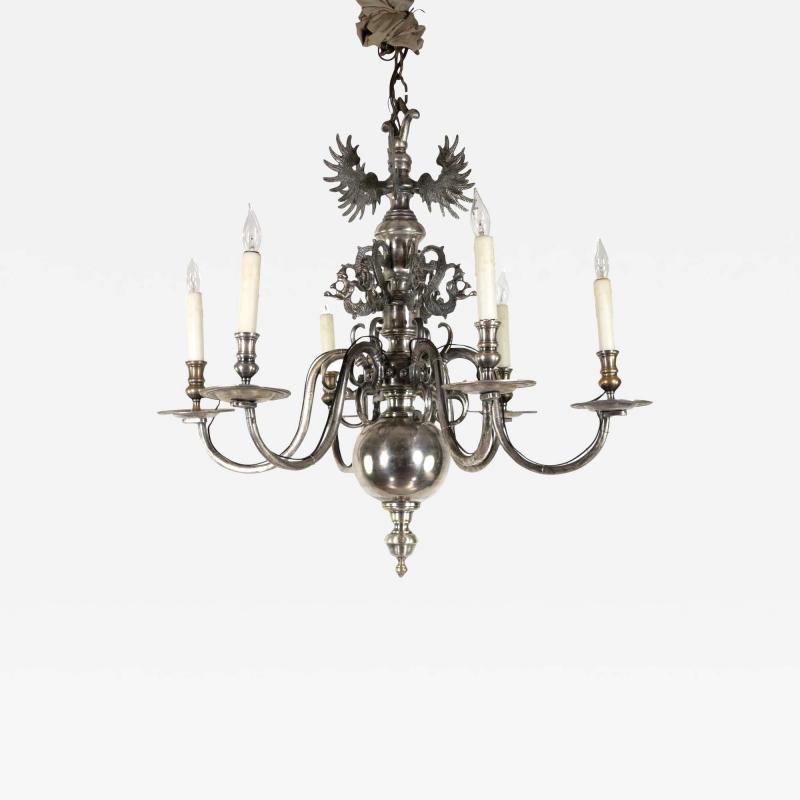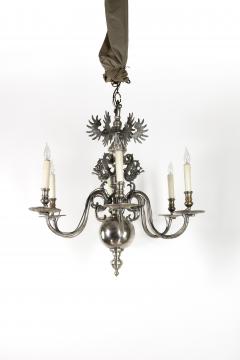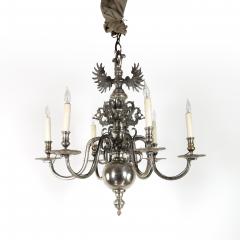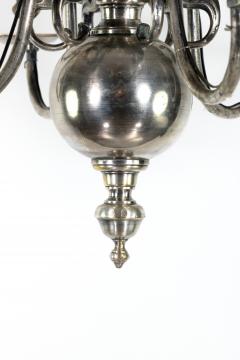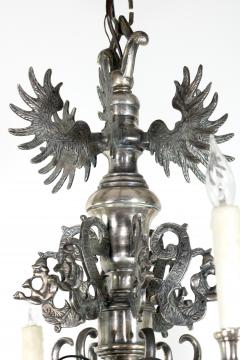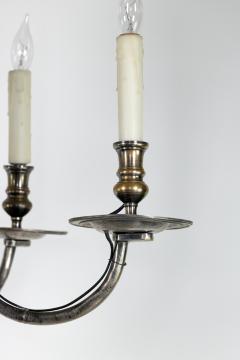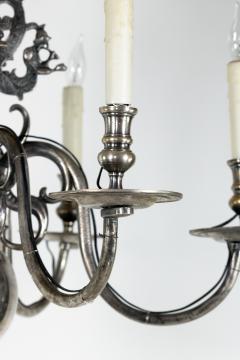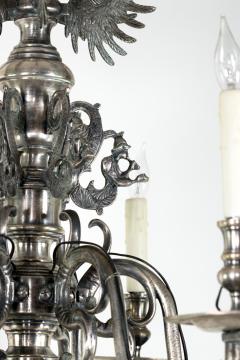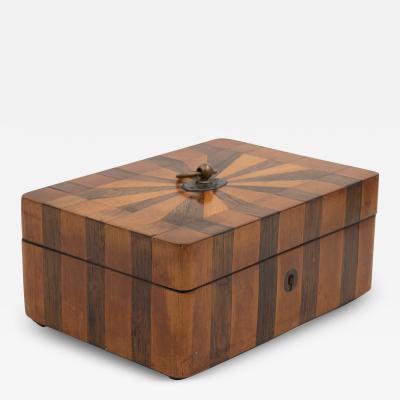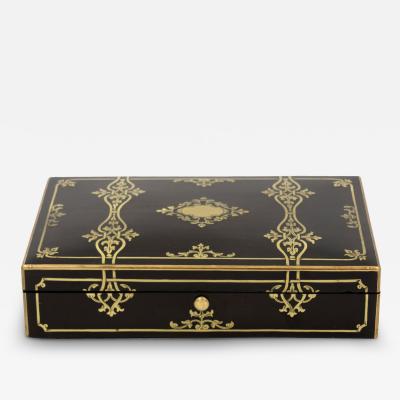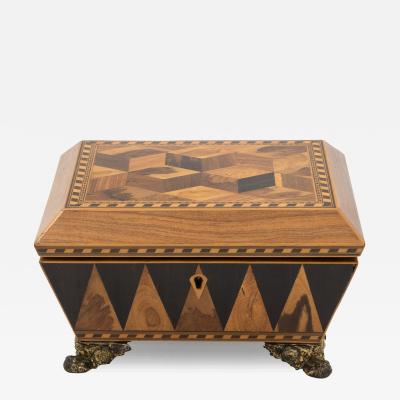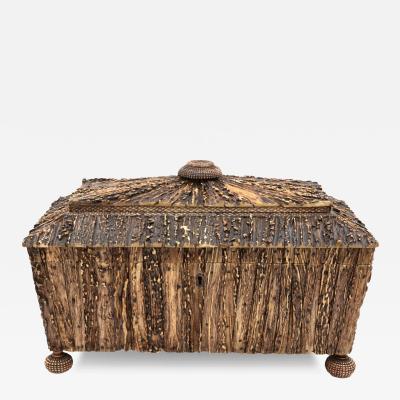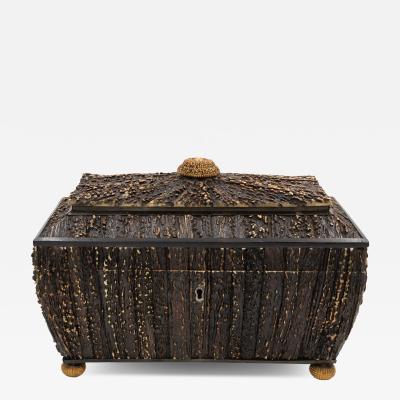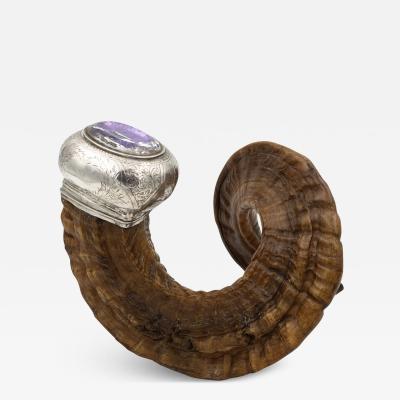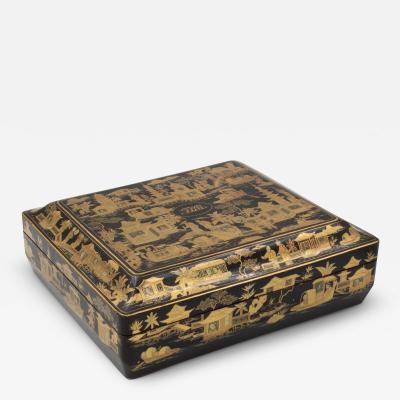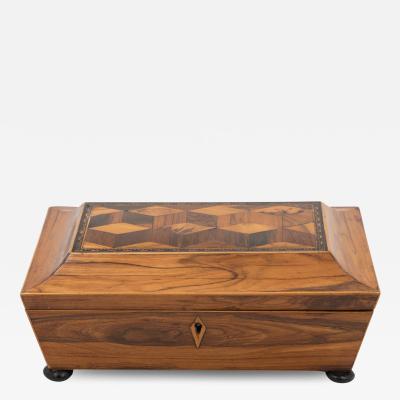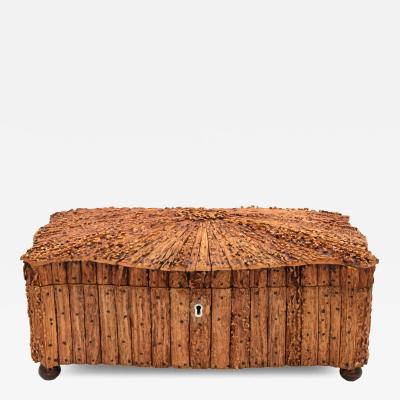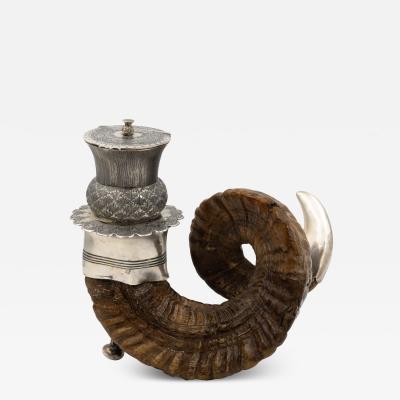A Flemish silver-plated bronze chandelier with six lights and intricate elements, including wings and mermen blowing horns, design motifs typical of early 20th-century Dutch craftsmanship. Netherlands, circa 1920. recently electrified.
diameter: 28 in. (71 cm)
drop: 28 in. (71 cm)
The belief in the power of mythic fauna to ward off evil spirits throughout Europe was pervasive and emblazoned on all types of sacred and secular objects.
Here, the grotesque imagery: half-human, half-fish, with scales and dragon-like wings, “mermen” are poised with horns to their lips, heralding significant events or possibly communicating across a great distance.
Wings often represent freedom and transcendence. In the context of this chandelier, the wings elevate the mermen from mere sea creatures to more celestial or powerful beings, perhaps protectors or guardians. The wings might also be an artistic flourish that reflects the Baroque and Rococo influences that persisted into the early 20th century in Europe. The wings might not directly reference a specific mythological figure but, instead, enhance the overall grandeur and sophistication of the piece.
This chandelier reflects a blend of Flemish cultural history and maritime symbolism, along with some of the artistic trends of the early 20th century. The mythical mermen represent a melding of the earthly and the divine–a symbolic nod to the Flemish people’s maritime history and cultural wealth. The chandelier’s appeal acknowledges their artistic heritage and a tradition of allegorical storytelling.















